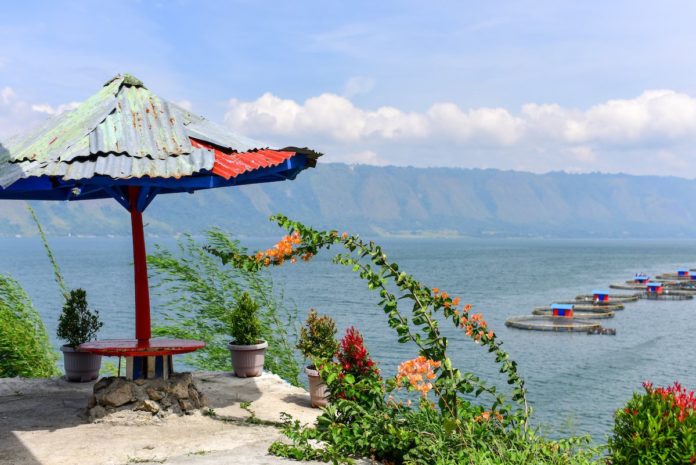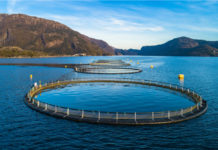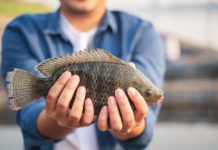Tilapia has been put through the rumor-mill. Some people think it has poor nutritional value, other’s believe it’s worse than bacon, and there have been rumors that all farmed Tilapia is bad.
While we can tell you that all of these rumors are false, it is true that Tilapia is better from some sources than others. Learning where your Tilapia comes from and how it is raised should play a role in influencing your purchasing decisions. When Tilapia is sourced from responsible suppliers, it is one of the best proteins to add to your diet.
But how do you know where it comes from and if it’s sourced responsibly? We’ve compiled a list of commonly asked questions to help clear up any confusion about how Tilapia ends up on your dinner plate.
How is Tilapia Raised? Is it Farmed or Wild?

The Tilapia we eat is farmed and not caught wild. In fact, over half of the seafood we eat comes from fish farms, also known as aquaculture. This can take place in either a recirculating tank system as is common in the US and Canada, or in freshwater lakes in floating pens, as is frequently seen in Indonesia, Mexico and Honduras.
Unlike in the wild, farmed fish are closely monitored and it is possible to know exactly what the Tilapia are eating, the water quality and the health of the fish. But as we said above, some Tilapia is farmed better than others, and knowing where the fish came from is important. Some suppliers use antibiotics and poor quality food, or allow the water to become contaminated with waste. Other fish farms, like Regal Springs, hold themselves to much higher standards and have many environmental certifications.
Are Fish Farming Operations Regulated?
Fish farms are regulated by the countries in which they operate. For example, China is a major source of Tilapia, but in the past China’s Tilapia farms have not been held to standards required by the US. The Environmental Defense Fund has noted that overcrowded conditions, poor quality feed and the use of chemicals and antibiotics are some of the past concerns about Chinese-raised Tilapia.
As a result, the best thing to do is to seek out fish from farms with third-party environmental or aquaculture certifications. A certification from the Aquaculture Stewardship Council (ASC) is one of the best ways to regulate the quality of your Tilapia.
How Do I Know If My Tilapia is Good Quality?

When you are shopping, there are a few things to look for. If you are buying prepared fish, check the packaging for this information. Or if you are buying fresh, talk to your fishmonger.
- Country of Origin – Country of origin labeling, which is overseen by the USDA, requires seafood and shellfish retailers to label product origins. Tilapia from Honduras, Mexico and Indonesia are safe bets, especially if the producer is Regal Springs. While it is harder to find, Tilapia from the US or Canada are also good options.
- Environmental Certification – Look for third-party certification marks from organizations like Aquaculture Stewardship Council (ASC), Global Aquaculture Alliance (GAA) and Ocean Wise. These programs provide assurance that the fish you eat—whether wild or farmed—is environmentally responsible, follows aquaculture best practices and will not jeopardize local ecosystems.
Like all foods, there are vast differences in quality among suppliers. Many of us shop very carefully for organically-grown vegetables and ethically-raised meat and dairy, but we may fail to pay the same consideration to our seafood. All of our purchasing decisions have an impact on the environment and our health, so it is important to be a conscious shopper with a good handle on what is fact and what is rumor.
Interested in learning more about where your food comes from? Read about how fish farming has evolved over the years and how aquaculture and agriculture can work in harmony.
Photos: Regal Springs, megastocker / Shutterstock Inc., Regal Springs






